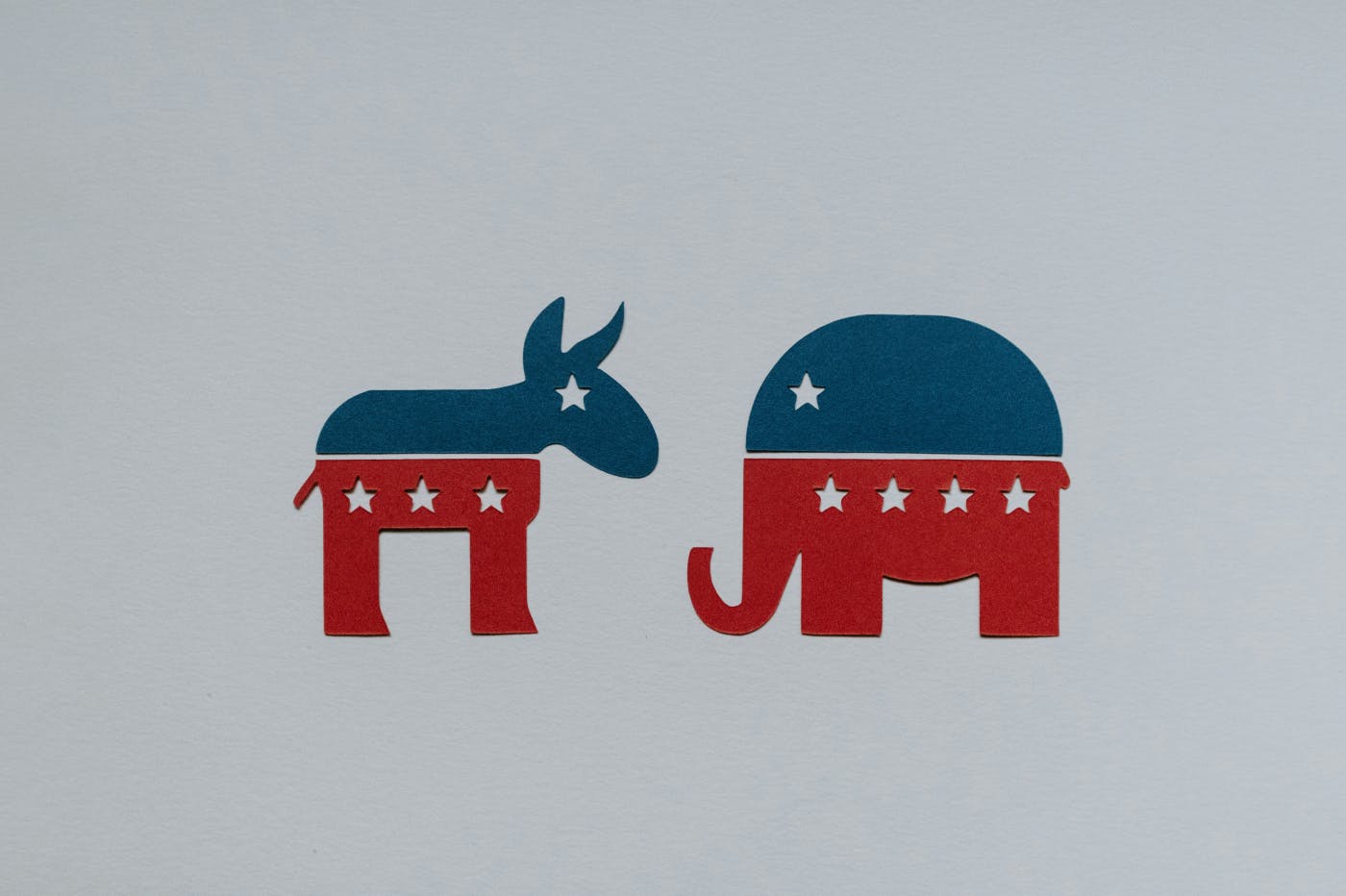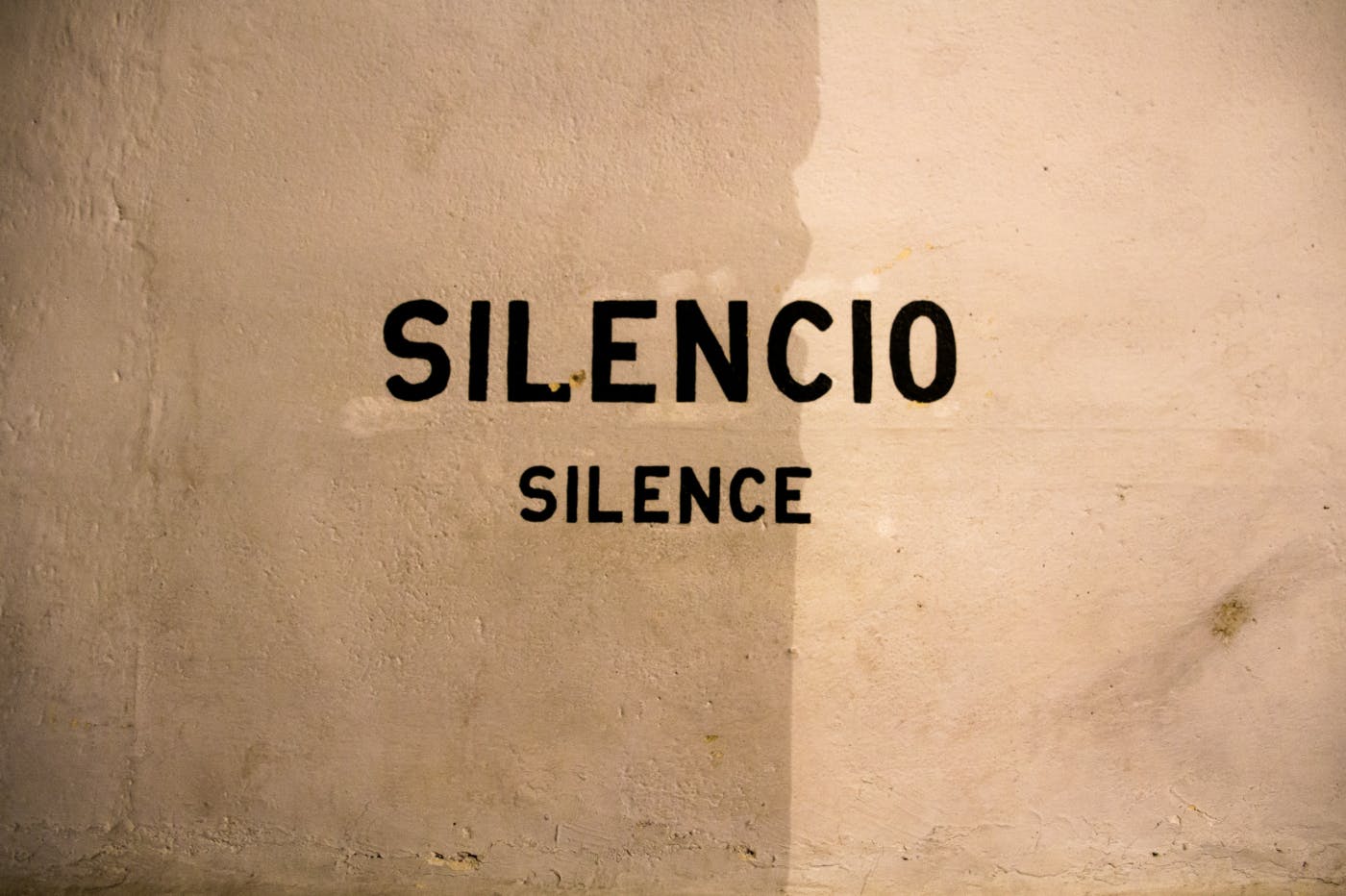

Taking a stand can differentiate a brand in a crowded market. When every product looks and sounds the same, taking a principled position can make a brand memorable.
I grew up in a family that believed it was impolite to talk about religion, politics, or money in company. This philosophy extended to the immediate family at dinner time as well. We’d never talk about politics at the dinner table, unless my father started the conversation, and then it was only to assure us that his party was right, and thus endeth the conversation.
Like most lower-class folks, I grew up thinking my parents' political affiliations were right, and I just assumed I would adopt them as I grew older. And that was fine—until one day, when I was getting my hair cut. I used the same barber my father did, and my brother used the same guy as well. He was “our” barber, and I never questioned it. When I was a kid, my father or mother would take us to get our hair cut; it wasn't until I was older and made the trip to the barber alone that things changed.
I recall the conversation going on around me—not with me, but around me—in the shop that first fateful day when I ventured to the barber alone, a ten-dollar bill in my pocket for a haircut and tip. I sat in the chair as Sid, the barber, unfurled the sheet that would wrap me for the haircut. I was quiet, polite, and respectful to my elders, but as the hierarchy progressed and the conversation with the other employee continued, I began to feel uncomfortable.
As bits of my flaming red hair drifted down and nestled on the floor, the words being thrown about were devastating. Talk of race and the bashing of immigrants—remember, this was a few decades ago—made me feel uneasy and unsettled. After my haircut, I paid and stood politely as Sid told me how well-behaved I was, that I was a good boy, and thanked me for the tip. His words were kind, but I couldn’t get past the unkind words he had shared during my visit.
About a month later, it was time for another haircut, and I told my mother I didn’t want to go back to Sid’s. She asked why, and I told her. She thought I was ridiculous. So, back I went, exposed again to more racist talk, hateful stereotypes, and anger. I felt uneasy when I left. Eventually, I said no and never went back. I found another barber, whose shop was far from my house, and my parents made me walk there because “maybe the walk will give you time to think about how stupid you’re being.” It gave me time to think—but not about that.
I made it to the new shop and met a barber named Al, and in his shop, the only “bad words” were about the New York Yankees or any team other than the Patriots. I felt more at ease there, and it was the barber shop I went to until the day I moved away.
My father and brother continued to go to Sid’s, and one day my brother said to me, “Sid apologizes for offending your oh-so-delicate sensibilities, and he said if I want to come back, he’ll give me a nice perm to go with my purse.”
I never went back, but I often thought about that time and that barbershop. It made me wonder: if Sid’s barbershop were a brand, should he have been talking about such incendiary subjects? If brands are people, it made me ask: should brands ever weigh in on political issues—or is staying silent the wiser move?

The Case for Brands Taking a Political Stand
Sometimes, speaking out aligns a brand with its values—and that alignment can be powerful. Consumers, particularly younger ones, increasingly expect brands to take a stand on issues that matter. Patagonia, for example, has built loyalty and identity around environmental activism, even when it risks alienating some customers. Nike’s campaign with Colin Kaepernick ignited controversy, but it also created a deep connection with people who share those values.
Taking a stand can differentiate a brand in a crowded market. When every product looks and sounds the same, taking a principled position can make a brand memorable. It signals authenticity—an unspoken “this is who we are” that resonates far beyond advertising slogans.
From my own perspective, I think about Sid’s barbershop again. Sid may have considered his commentary “just talk,” but if his shop had been a brand, that talk became a public statement about his values—or at least the values he projected. Customers, including me, responded accordingly. That story, small as it is, mirrors the larger principle: people notice what brands say and do. They remember it, for better or worse.
Of course, standing for something comes with risk—but done thoughtfully, it can reinforce identity, build loyalty, and even energize employees who want to feel part of a mission larger than just sales.
Taking a stand can energize loyal customers and employees, but it’s not without consequences. For every brand that wins hearts by speaking out, there’s another that miscalculates and faces backlash. Understanding the risks is just as important as knowing the rewards—and that’s where the next conversation begins.
The Risks of Brands Taking a Political Stand
Speaking out can energize some customers, but it inevitably alienates others. The same bold stance that wins loyalty from one group can spark outrage from another. Pepsi’s infamous ad with Kendall Jenner, intended to signal solidarity with social movements, backfired spectacularly. The message felt tone-deaf, and the backlash was swift. It’s a reminder that intent alone isn’t enough—execution and context matter just as much.
Brands also risk diluting their identity when they wade into areas that don’t align with their core values. Consumers are quick to spot when a company’s activism feels performative, or worse, opportunistic. That disconnect can erode trust faster than any marketing misstep.
Thinking back to my barber shop experience, Sid’s offhand comments weren’t part of a carefully crafted strategy—they were just words. Yet those words shaped my perception of him and his shop. I couldn’t separate his opinions from the service he provided, just as customers today can’t separate a brand’s values from its products or messaging. Even small missteps can have outsized consequences in an era of social media amplification.
Navigating these risks requires more than courage; it demands clarity and self-awareness. Brands must ask: Does this stance reflect who we truly are, or is it a gamble that could fracture the audience we’ve worked to build?
Even the most well-intentioned statements carry risk. And that’s why many brands choose to stay silent, carefully weighing every word. But silence, too, has consequences—and in some cases, it can speak just as loudly as action. That tension between speaking and staying quiet sets the stage for our subsequent discussion: when silence is actually the safer, smarter move.

The Case for Staying Silent
Sometimes, not speaking is the wiser choice. Silence allows a brand to focus on what it does best—serving customers, building trust, and maintaining consistency—without wading into contentious waters. Not every issue requires a statement, and not every audience expects one. For many brands, neutrality isn’t weakness; it’s prudence.
Take classic examples like Coca-Cola or IKEA. Both have global audiences with diverse beliefs, backgrounds, and expectations. By carefully choosing when to speak and when to remain neutral, they avoid alienating large segments of their customer base while still expressing values through actions, culture, and corporate responsibility initiatives rather than overt political commentary.
I think back to my own experience with Sid and Al. Choosing Al as my barber wasn’t about endorsing a political stance; it was about aligning my daily life with spaces where I felt comfortable and respected. That choice was quiet, personal, and powerful. Sometimes, making a decision quietly, without a public declaration, has a more lasting impact than any statement shouted from a billboard.
Silence, however, is not neutrality in action—it’s intentionality. It requires the same thoughtfulness that goes into taking a stand: knowing your audience, understanding your values, and being consistent. Done well, silence preserves trust, maintains focus, and keeps the door open for engagement on issues that truly align with the brand’s mission.
By recognizing when silence speaks louder than words, brands can navigate controversy with care. But even the wisest silence can be interpreted—and misinterpreted. This delicate balance between action and restraint brings us to the heart of the conversation: how brands can decide when to speak, when to remain quiet, and how to align those choices with their values.
A Framework for Brands: Deciding When to Speak
So, how can a brand—or a person running a brand—decide whether to weigh in or stay silent? There’s no one-size-fits-all answer, but there are guiding principles that can make the decision more intentional.
1. Know Your Values<br />Every brand has core values. These aren’t just slogans on the website—they’re the compass for action. If a political issue aligns clearly with those values, speaking up can reinforce identity rather than risk alienation. For example, Ben & Jerry’s commitment to social justice is rooted in long-standing values, so their political statements feel authentic rather than performative.
2. Understand Your Audience<br />Who are you talking to, and how will your statement land? Consider the diversity of your customer base and the different lenses through which they see the world. The goal isn’t to please everyone—that’s impossible—but to ensure your actions resonate with those who matter most to your brand.
3. Consider the Stakes<br />Some issues are existential, some are peripheral. Evaluate the risk versus reward. Are you addressing something central to your mission, or taking a stand for visibility’s sake? Sometimes a misstep can damage trust for years, and sometimes the silence itself carries a reputational risk.
4. Think Beyond Words<br />Sometimes, action speaks louder than statements. Brands can demonstrate values through internal policies, charitable work, or sustainable practices. This approach allows the brand to live its principles authentically, without entering the contentious space of political debate.
5. Reflect and Iterate<br />Even when you decide to speak—or to stay silent—be prepared to learn. Monitor reactions, gather feedback, and refine your approach. Transparency about your decision-making process can also build trust: people respect thoughtfulness more than perfection.
Making these choices isn’t about fear; it’s about alignment. It’s about knowing your brand, understanding your audience, and acting with intention rather than impulse. And just like my barber shop experience—choosing where to invest your trust, or where to walk away quietly—these decisions shape perception over time.
By following these principles, brands can navigate the tricky waters of politics thoughtfully, with integrity and foresight. Yet even the clearest framework can’t answer every question—because the ultimate choice is about courage, context, and the story a brand wants to tell. And that brings us to the final reflection: the human side of branding in a political world.

Summing Up: The Human Side of Branding
Looking back, my barber shop story wasn’t just about haircuts—it was about values, choices, and the quiet power of alignment. Sid’s words shaped my perception, even though I was just a kid in his chair, and Al’s shop felt like a safe, respectful space where I could be at ease. These experiences mirror what happens with brands today: every message, every stance, every silence sends a signal.
Brands are, in a sense, like people. They carry histories, project identities, and make choices that affect how others see them. Speaking out can build deep loyalty, energize audiences, and define a brand’s mission in bold ways. But it comes with risk: misalignment, backlash, or perceptions of performative action. Silence, when intentional, can preserve trust, maintain focus, and allow the brand to act authentically in ways that matter most.
Ultimately, the decision isn’t just about politics—it’s about clarity, courage, and consistency. It’s about understanding who you are as a brand, who you serve, and what you stand for. And it’s about knowing that, sometimes, the quiet choice is as powerful as the loud one.
For brands navigating this terrain, resources like ThoughtLab offer research-backed insights and real-world examples that can guide decision-making. Just as I made my own choice about which barber to trust, brands must make deliberate decisions about when to speak and when to let their actions—or their silence—tell the story. Because in the end, what people remember isn’t just the words a brand says, but the values it lives by.
